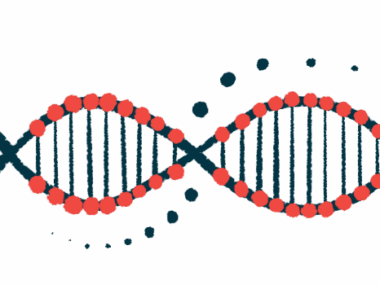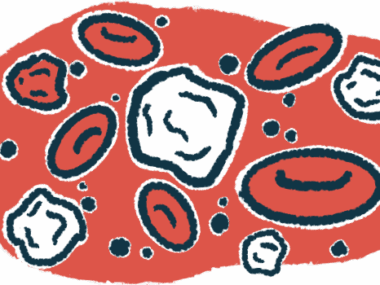ELX-02 reverses impact of nonsense mutations in RDEB, JEB cells
Study provides proof of concept for therapy, researchers say
Written by |

The experimental therapy ELX-02 reversed the effect of nonsense mutations in skin cells derived from people with recessive dystrophic epidermolysis bullosa (RDEB) and junctional epidermolysis bullosa (JEB), a study found.
Nonsense mutations in genes result in shorter, non-functional proteins, which commonly occur in RDEB and JEB patients, and ELX-02 was able to increase the production of those proteins.
“ELX-02 may offer a novel and safe therapy for RDEB, JEB, and other inherited skin diseases caused by nonsense mutations,” the researchers wrote.
The cell-based study, “ELX-02 Suppresses Nonsense Mutations and Restores Type VII Collagen and Laminin 332 Function in Recessive Dystrophic and Junctional Epidermolysis Bullosa,” was published in Molecular Therapy Nucleic Acids.
Epidermolysis bullosa (EB) is a group of rare skin disorders marked by fragile skin that easily tears, leading to blisters and scarring of varying severity. RDEB and JEB are two types of EB.
Going through stop signals
RDEB is caused by mutations in the COL7A1 gene, disrupting the production of type VII collagen (C7) protein, which connects and anchors different skin layers. JEB is most commonly caused by mutations in one of three genes, LAMA3, LAMB3, or LAMC2, which affect laminin 332, a protein that also strengthens the skin by holding layers together.
Up to 25% of mutations in COL7A1 and about 80% in LAMB3 are nonsense mutations. This type of mutation causes a stop signal in the middle of the gene, resulting in a shorter, non-functional protein that is rapidly degraded.
ELX-02 is designed to allow a cell’s protein-making machinery to read through the stop signal and generate a full-length, functional protein.
The experimental therapy is undergoing clinical testing as an add-on treatment for certain nonsense mutations that cause cystic fibrosis (CF), a condition characterized by the buildup of thick, sticky mucus in the lungs and digestive tract.
Scientists at the University of Southern California, in collaboration with Eloxx Pharmaceuticals, the therapy’s developer, sought to determine whether ELX-02 could restore C7 and laminin 332 production in cells harboring nonsense mutations.
Different concentrations of the therapy were tested against two types of skin cells — fibroblasts and keratinocytes — derived from two RDEB patients, each harboring different COL7A1 nonsense mutations. As a comparison, cells were also exposed to the antibiotic gentamicin, a treatment with the same mechanism of action but linked to kidney toxicity, particularly at higher doses and prolonged use.
Tests showed that ELX-02 induced the production of the full-length C7 in a dose-dependent manner, compared with untreated cells that showed no or minimal C7 expression. At the highest concentration, ELX-02 included up to about four to five times more C7 than gentamicin at its optimal dose without any signs of toxicity.
To reflect clinical therapeutic use, patient fibroblasts and keratinocytes were exposed to ELX-02 daily for five consecutive days. Results showed a progressive increase in C7 production with successive doses of ELX-02, with no apparent toxicity.
As with RDEB cells, ELX-02 induced the production of the full-length laminin beta-3 in keratinocytes derived from two JEB patients with different nonsense mutations in a dose-dependent manner. Compared with gentamicin’s optimal dose, the highest dose of ELX-02 induced up to 10 times more full-length protein. No signs of toxicity were noted at any ELX-02 dose.
RDEB fibroblasts and JEB keratinocytes demonstrate hypermotility, meaning they move faster in cell migration tests than healthy cells. As expected, both cell types from the patients showed hypermotility, which was normalized with ELX-02 treatment. The therapy had no impact on the movement of healthy fibroblasts.
The team then grew 3D cultures constructed with keratinocytes or fibroblasts to mimic the dermal-epidermal junction, where C7 and laminin 332 hold skin layers together.
As expected, neither RDEB nor JEB cells showed protein at the junction. In contrast, ELX-02 induced the production of C7 or laminin 332 and led to their incorporation into their proper location within the dermal-epidermal junction.
“Our study provides the proof of concept for using ELX-02 to … induce C7 and laminin 332 expression in RDEB and JEB patients with nonsense mutations,” the researchers concluded. “The utility of ELX-02 for treating nonsense mutations associated with RDEB and JEB needs to be further evaluated in clinical trials.”






